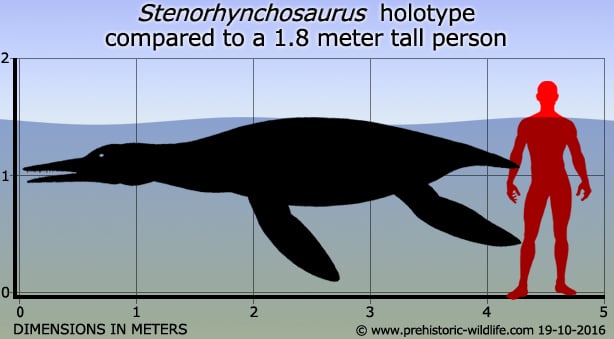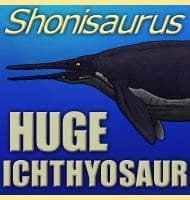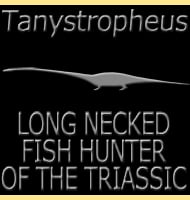In Depth
Fossil remains of Stenorhynchosaurus were first discovered in 2000, and later excavation of the fossil site between 2004 and 2005 revealed an almost complete skeleton. Also in 2005, paleontologist Oliver Hempe came to the theory that this pliosaur possibly represented a species of the genus Brachauchenius. Later more detailed study however identified this pliosaur as a distinct genus, and hence Stenorhynchosaurus became established as the new name.
Stenorhynchosaurus is noted for having a narrow snout, which is also the main inspiration for the name. At a little over four meters in length for the holotype individual, Stenorhynchosaurus was small when compared to some of the monster pliosaurs such as Pliosaurus, and was likely a hunter of smaller aquatic organisms such as fish.
Further Reading
- Considerations on a Brachauchenius skeleton (Pliosauroidea) from the lower Paja Formation (late Barremian) of Villa de Leyva area (Colombia). Fossil Record - Mitteilungen aus dem Museum f�r Naturkunde in Berlin 8 (1): 37-51. - Oliver Hampe - 2005. - Stenorhynchosaurus munozi, gen. et sp. nov. a new pliosaurid from the Upper Barremian (Lower Cretaceous) of Villa de Leiva, Colombia, South America. - Revista de la Academia Colombiana de Ciencias Exactas, F�sicas y Naturales. 40 (154): 84–103. - Mar�a E. P�ramo, Marcela G�mez-P�rez, Leslie F. No�, Fernando Etayo - 2016. – A new specimen of Stenorhynchosaurus munozi P�ramo-Fonseca et al., 2016 (Plesiosauria, Pliosauridae), from the Barremian of Colombia: new morphological features and ontogenetic implications. – Journal of Vertebrate Paleontology Volume 39, 2019 – Issue 4. – Mar�a E. P�ramo-Fonseca, Cristian D. Benavides-Cabra & Ingry E. Guti�rrez – 2019.










